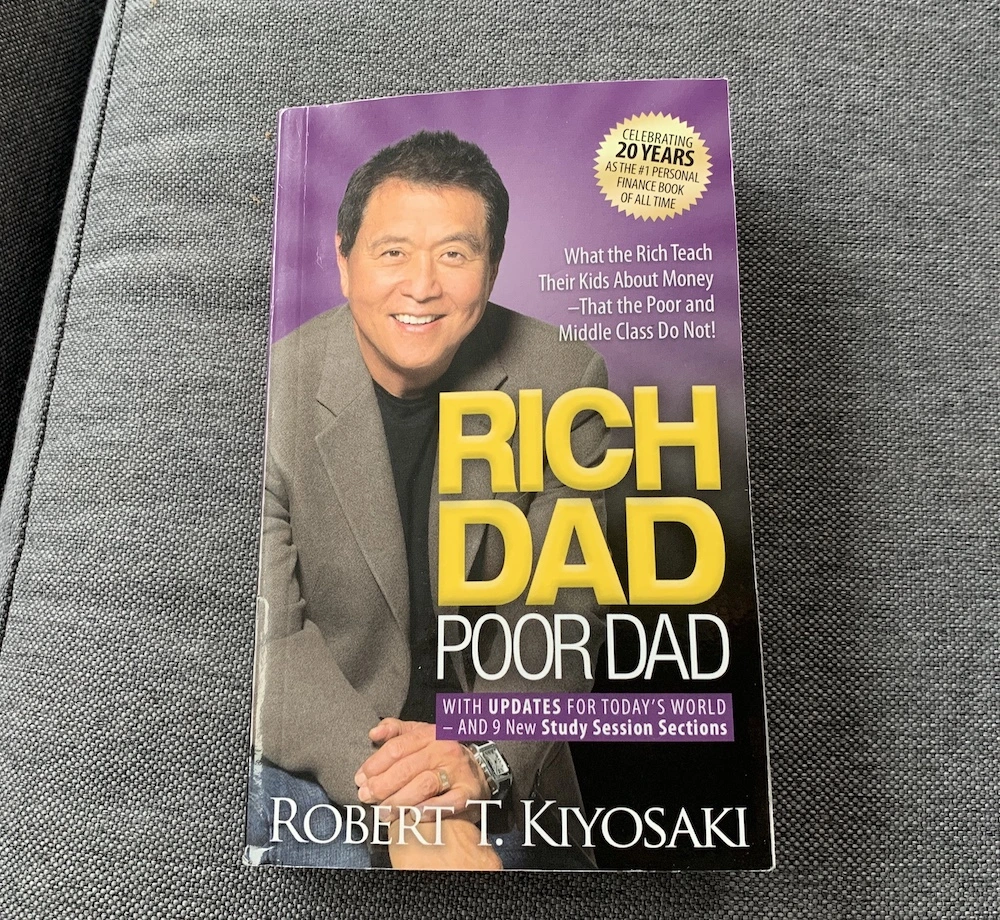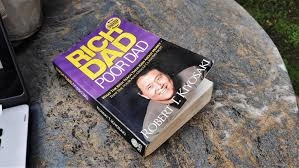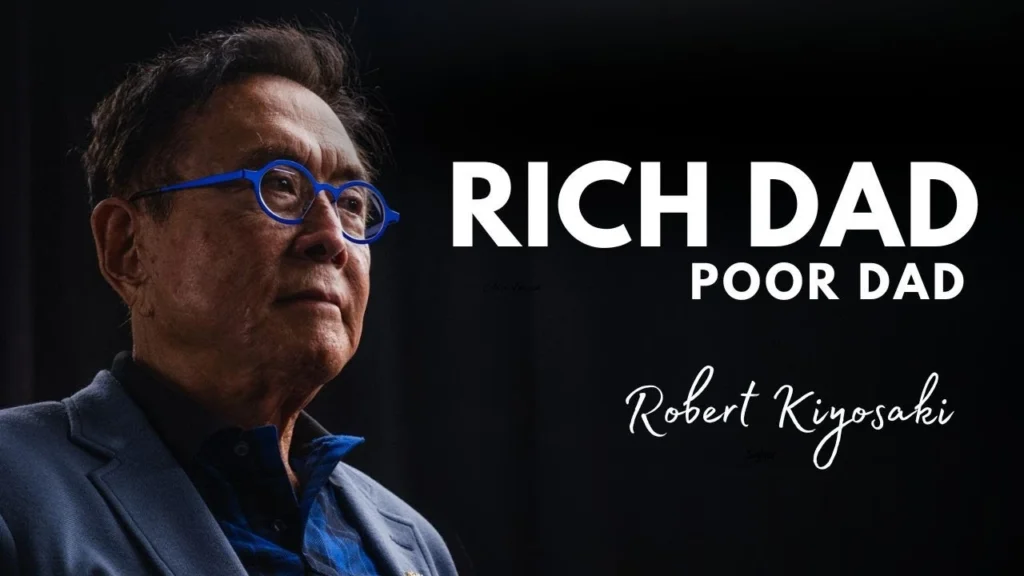
“Rich Dad Poor Dad” by Robert Kiyosaki is a groundbreaking book on personal finance that has changed the way millions think about money. The book contrasts the financial philosophies of Kiyosaki’s two father figures—his biological father, the “Poor Dad,” and his best friend’s father, the “Rich Dad.” Through their differing approaches to wealth and success, Kiyosaki delivers powerful financial literacy lessons. This article will provide a detailed Rich Dad Poor Dad Chapter Summaries, explore key takeaways, and uncover the wealth-building concepts that have made this book a personal finance classic.
Chapter 1: The Rich Don’t Work for Money
In the opening chapter, Kiyosaki explains that the rich don’t work for money; instead, they make money work for them. The Poor Dad believes in securing a stable job with benefits, while the Rich Dad teaches that real wealth comes from acquiring assets that generate passive income. Kiyosaki urges readers to focus on building wealth mindset principles by learning how money works and not falling into the trap of working for a paycheck alone. This chapter emphasizes the importance of financial independence insights and how your mindset determines your financial success.
Chapter 2: Why Teach Financial Literacy?
One of the book’s core messages is the need for personal finance education. Kiyosaki discusses how schools fail to teach students about money, leaving most people unprepared for real-life financial decisions. He explains the difference between assets vs liabilities: assets put money in your pocket, while liabilities take money out. Understanding this concept is key to growing wealth. The financial intelligence tips from this chapter encourage readers to invest in assets, such as real estate or stocks, and to avoid debt tied to liabilities like consumer loans or mortgages on personal residences.

Chapter 3: Mind Your Own Business
In this chapter, Kiyosaki advises readers to focus on their own businesses rather than making someone else rich. Even if you work a regular job, you should always be looking to build side income streams. The wealth creation techniques taught here highlight the importance of building and acquiring income-producing assets. Kiyosaki emphasizes developing money management strategies, including how to budget for investments in assets, rather than spending income on liabilities. This approach gradually leads to financial freedom.
Chapter 4: The History of Taxes and the Power of Corporations
Kiyosaki explains how the rich use corporations to minimize taxes and protect their wealth. By understanding the tax system, you can keep more of your income and reinvest it in assets. He contrasts the Poor Dad, who views taxes as inevitable, with the Rich Dad, who uses the law to his advantage. The investment advice from Rich Dad Poor Dad in this chapter is clear: learn how taxes work and structure your investments and business in a way that maximizes profit and minimizes tax liability.
Chapter 5: The Rich Invent Money
This chapter discusses the importance of creativity and taking risks when building wealth. Kiyosaki explains that the rich are not necessarily the smartest people but those who find opportunities where others see obstacles. The financial freedom guide provided in this chapter encourages readers to think outside the box, be proactive, and capitalize on opportunities others might overlook. This chapter also introduces the idea of leveraging other people’s money through investments, partnerships, and business strategies.
Chapter 6: Work to Learn—Don’t Work for Money
Kiyosaki stresses the importance of learning over earning in this chapter. He shares his belief that specializing too early in your career limits your potential. Instead, focus on learning new skills that can lead to wealth creation. The financial philosophy of Rich Dad Poor Dad is rooted in gaining knowledge in areas like sales, marketing, investing, and leadership. The more you learn, the more valuable you become, which in turn increases your ability to build wealth.
Chapter 7: Overcoming Obstacles
The path to financial independence is not without challenges, and this chapter outlines the main obstacles people face: fear, cynicism, laziness, bad habits, and arrogance. Kiyosaki offers financial intelligence tips on how to recognize and overcome these challenges. He encourages readers to invest in personal development and adopt a winning mindset. The Rich Dad Poor Dad key takeaways here highlight the mental resilience needed to succeed financially.
Chapter 8: Getting Started
This chapter provides practical advice on how to begin your financial journey. Kiyosaki emphasizes the importance of taking action and not being paralyzed by fear or over-analysis. The cash flow quadrant explanation introduced here divides people into four groups: employees, self-employed, business owners, and investors. The goal is to move from the employee and self-employed quadrants into the business owner and investor quadrants to achieve true financial independence.

Chapter 9: Still Want More? Here Are Some To-Do’s
The final chapter offers a to-do list for readers who want to apply the lessons from the book. This includes steps like getting educated about investments, networking with like-minded people, and starting small by investing in assets like stocks or real estate. The Rich Dad Poor Dad book overview concludes by reminding readers that wealth-building is a lifelong journey that requires persistence and discipline.
Conclusion
“Rich Dad Poor Dad” offers timeless wisdom on achieving financial independence through smart investing, personal finance education, and the cultivation of a wealth mindset. By following the book’s core principles—acquiring assets, minimizing liabilities, and always striving to learn—you can set yourself on the path to financial success. The key to building wealth lies in taking control of your finances, being proactive, and making informed decisions.
5 FAQs
1. What is the main lesson of “Rich Dad Poor Dad”?
The primary lesson is the importance of financial literacy. The book teaches readers how to build wealth through the acquisition of assets, while avoiding the pitfalls of working for money and accumulating liabilities.
2. How does “Rich Dad Poor Dad” define an asset and a liability?
An asset is something that puts money in your pocket, while a liability takes money out. For example, rental properties are assets, while a mortgage on your personal residence is a liability.
3. Why does Robert Kiyosaki advocate for starting a business?
Kiyosaki believes that starting a business provides the best opportunity to control your financial future and build passive income streams, leading to financial freedom.
4. What is the cash flow quadrant?
The cash flow quadrant is a concept that divides people into four categories based on how they make money: employee, self-employed, business owner, and investor. Kiyosaki advocates for moving from the employee/self-employed quadrants to the business owner/investor quadrants to achieve financial independence.
5. How can I apply the lessons from “Rich Dad Poor Dad”?
Start by increasing your financial education, investing in assets like real estate or stocks, and minimizing liabilities. Focus on building passive income streams and always look for opportunities to learn and grow your financial intelligence.
For further interesting blogs visit our website .







